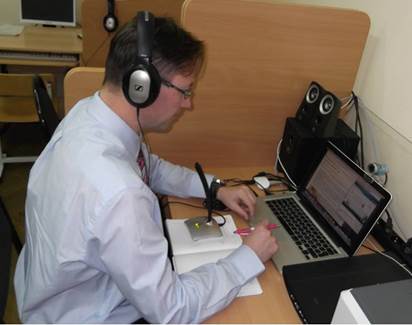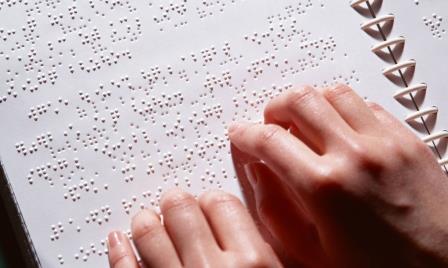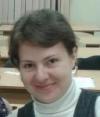Paraphrasing is generally considered to be an essential skill for scientific writing. Paraphrasing is crucial for mindful borrowing of other authors’ ideas while writing a literature review and for providing evidence of the relevance and novelty of scientific research. Several authors have explored how mastering various paraphrasing techniques allows writers to avoid plagiarism and focused on various strategies employed by students at different levels to reproduce original texts in their own words. Thus, Kettel and DeFauw [1] presented the «Read, Reread, List, Compose» (RRLC) strategy to write from a bulleted list of words or phrases containing the most essential details of the source text. Keck [2] identified the main grammatical strategies of paraphrase and emphasized that further investigation into such practices will enable a better understanding of ways to avoid plagiarism. Shi [3] highlights that such a basic academic literacy skill as paraphrasing is in fact complex and to a large extent depends on students’ knowledge of the content of the source text, the established norms of citation practices in the discipline and the rhetorical purposes of using citations in specific contexts.
Paraphrasing is particularly important when writing academic works in the second language (L2) as the lack of language proficiency may result in excessive borrowing. Many authors have contributed to this field. Hirvela and Du [4] explored the paraphrasing strategies used by Chinese undergraduate ESL students. Keck [5; 6] compared the ways in which L1 and L2 writers treat paraphrasing. Shi [3] analyzed paraphrases by L2 students from China, Japan and Korea and suggested the significance of both linguistic and content knowledge in rewriting original texts. Unfortunately, little is known about the paraphrasing techniques employed by Russian writers. In this paper, we aim to fill this gap as it could expand the views of the scientific community on L2 academic writing as a whole. We explore the main strategies of rewriting a source text used by Russian novice academic writers and identify problematic areas in their paraphrases. We seek to inform writing teachers of the most common strategies and difficulties arising in paraphrases so that they could advise L2 students accordingly.
Literature Review
In recent studies, paraphrasing is acknowledged to be a considerably underdeveloped skill among university students [7]. Insufficient paraphrasing skills [8], alongside with the widespread availability of digital resources [9], are among factors that lead to an increase in plagiarism in academic writing. Several recent investigations focus on the effects of different teaching methods and tools that enable training students to paraphrase and improve their paraphrasing skills in order to prevent plagiarism, among which are reflective writing [8], teacher's explicit instruction and Web-based practices [10].
Paraphrasing has also been discussed in terms of its cultural aspect. Several scholars like Chien [11], Keck [6] and Shi [3] relate second language learners' problems with paraphrase to their cultural attitude towards a text. They demonstrate that some cultures (specifically, Asian) view knowledge as a property of a society and hence are more likely to commit plagiarism as they lack ethical awareness that copying fragments of other authors' original texts is wrong [12].
To solve the complex relations between paraphrasing and plagiarism, some scholars suggest teachers and students should change their attitude to paraphrasing and start viewing it as a valuable and powerful tool that makes it possible to interpret, evaluate and re-shape information [7], to support or refute a claim by using a source [13]. Paraphrasing also contributes to enhancing the consistency of academic writing, as borrowed texts and fragments can be transformed and adjusted to fit the writer's own style [14]. According to Tran and Nguyen [15], paraphrasing can improve academic writing skills in general, including task fulfillment, organization and citation. Moreover, paraphrasing is of great importance in the assessment of students' academic performance, as it reveals how students are engaged and understand the ideas in the original text [16].
However, despite the widely acknowledged significance of paraphrasing skills in academic writing and teaching these skills to novice academic authors, few attempts have been made to analyze the problematic areas that L2 learners can come across in their paraphrases. The aim of the present study is to address paraphrasing strategies used by Russian novice academic writers and identify difficulties that can prevent them from paraphrasing effectively.
Material and Methods
Research Context. The findings in this article are based on a study which investigated how first-year PhD students make use of paraphrasing strategies while performing the task of writing a summary in the course of English as a second language. The study took place in the winter of 2021 at National Research Nuclear University MEPHI located in Moscow, Russia. Prior to the writing task, the students had had 14 classes focusing on academic vocabulary and grammar characteristic of scientific texts, as well as the basic principles of appropriate text borrowing in academic writing.
Participants. The participants of the present study are 22 PhD students enrolled at National Research Nuclear University MEPhI in 2020. All of them are non-native English speakers and specialize in such technical areas as Theoretical Physics, Nuclear Physics, Information Security and Computer Science. As the participants graduated from different universities in Russia and some other post-Soviet countries, their level of English-language proficiency varies to a great extent. Yet, none of them had sufficient experience in paraphrasing academic texts.
Writing Samples. The students were given a task to write a summary (150‒200 words) of an introduction to an authentic scientific paper written by native English speakers containing 374 words [17] during 45 minutes. The paper was taken from a highly ranked journal (Q1), and its subject area was expected to be equally comprehensible to all the participants. In their texts, the students needed to convey the ideas of the original text without borrowing excessively from it.
Procedure. The study comprised three stages. In the initial stage, we aimed to identify instances of paraphrasing and classify them in terms of the quality of paraphrase. Thus, following Keck’s methodology [5] and apadting it to our research context, we assigned each word within a student-generated text one out of the following 5 categories: copies, paraphrases, general links, in-text citations or misinterpretations. Copies are words and strings of words directly borrowed from the original text without any change to its vocabulary, grammar or structure. Paraphrases are words and strings of words that are not present within the source text. General links are words and strings of words that are used extensively (5 and more times) in the original text and, therefore, are featured within student-generated texts. Without these words it is challenging to convey the meaning of the original text. For example, such words as learner(s), student(s), teacher(s) and classroom(s) appeared multiple times throughout the source text and were not considered exact copies within student-generated texts. In-text citations are a universal tool used by academic writers and are obligatory in appropriate textual borrowing.
Misinterpretations are words and strings of words, the presence of which within a student-generated text is caused by an incorrect interpretation of ideas of the original text. Even though words in this category technically contain elements of paraphrasing, they were not deemed paraphases due to the fact that they either add new meaning to the original text or modify the facts from it. It should be noted that Keck’s methodology [5] does not have this category, which could be explained by the fact that the results of her research were mainly concerned with the students currently studying in a US university with considerable language experience including academic writing. The participants of the present study, for the most part, had little to no experience in L2 scientific reading and writing, so it is natural to assume that they can misinterpret certain facts from the original text. Moreover, as the results of the study showed, almost every student-generated text has words in that category.
The resultant percentage of words within each category in a student-generated text was used to determine the quality of paraphrase. Each text was classified as an exact copy, a minimally revised text, a moderately revised text, a substantially revised text or a misinterpreted text based on how many words of each category were present in it. Exact copies are texts with significant percentage (90 % and more) of copies within them. Minimally revised texts contain around 70 % of copies. Moderately revised texts feature approximately equal number of copies and paraphrases. In substantially revised texts, paraphrases comprise 70 % or more of all words. Misinterpreted texts are texts in which the number of misinterpretations exceeds 30 %.
In the second stage, we analysed the types of transformations that students used in their texts based on the classifications and topologies of paraphrasing strategies provided in the studies by Bhagat [18] and Vila et al. [19‒20]. Following these topologies, we broke every transformation that students made in their works into three types: lexico-semantic, grammatical and structural. Lexico-semantic transformations include the use of synonyms (for example, «schools across the United States» // «schools located in the United States»), conversions from one part of speech to another («foster student’s independence and creativity» // «make students independent and creative»), semantic implication («digital technologies can individualize learning» // «digital technologies provide an ability to tailor the curriculum to each student’s needs»), numeric equivalences («more than 20 %» // «every fifth») and metaphors («tried-and-true learning activities» // «learning activities that stood the test of time»). Grammatical transformations are most commonly changes to voice («English classrooms are using digital technologies» // «digital technologies are being used»), aspect («to create hybrid and interconnected spaces» // «creating hybrid and interconnected spaces») and other grammatical indicators. Structural transformations involve the change in the order of words in a sentence or in the order of fragments in the original text, the addition and deletion of a word or a phrase.
In the final stage, we conducted a survey to analyze the students’ opinion of the task and the strategies they used to do the writing assignment. The students were asked three closed-ended questions: (1) How difficult was the task for you? (2) What did you find most difficult? (3) What methods of paraphrasing did you use? For questions 2 and 3, the students could choose more than one answer.
Results
The findings of the qualitative study show that an average student-generated text contains 182 words. Figure 1 shows the average distribution of words among such categories as general links, copies, paraphrases, in-text citations and misinterpretations. As can be seen from the diagram, copies and paraphrases are the two most commonly found word categories, and they are both featured in approximately the same amount (37 % and 35 % respectively).
The data in figure 1 indicates that even though the participants tried to employ paraphrasing strategies while writing their texts, they still copied words and strings of words from the original text. This could be further explained by the results of the survey that we conducted in the final stage of our study. The most common answer (16 out of 22 replies) to the question «What did you find most difficult?» was «Not to copy phrases from the original text».

Fig. 1. Average distribution of words among categories
Overall, an average student-generated text has 27 transformations, out of which 14 are lexico-semantic, 5 are grammatical and 8 are structural. As for transformation types, an exceeding number of lexico-semantic transformations suggests that the participants opt to search for synonyms most of the time and feel apprehensive to make more complicated changes, such as to structure or grammar (table 1).
Table 1
Number of student-generated texts by type
| Text type | Number |
| Exact copy | 4 |
| Minimally revised text | 9 |
| Moderately revised text | 8 |
| Substantially revised text | 0 |
| Misinterpretation | 1 |
Table 1 demonstrates the general number of student-generated texts by type: exact copies, minimally revised texts, moderately revised texts, substantially revised texts and misinterpretations. As can be seen from the table, the study revealed no substantially revised texts among the texts that were submitted. The most common text types are minimally revised texts (9 texts out of 22) and moderately revised texts (8 texts out of 22), which indicates that the participants prefer to overly rely on the original text while writing their summaries. One text was deemed to be a misinterpretation, in other words, it was apparent that the author misunderstood the meaning of some parts of the original text and some terminological units. For instance, the phrase «schools across the United States are rapidly integrating digital technologies» was erroneously generalized to «there is a global process of transition of the working and educational system to the remote mode»; or the phrase «more than 20 percent of children in the United States speak a language other than English at home» was mistakenly changed to «those students in addition to learning English, they also independently speak several languages at home». These instances of misinterpretation suggest that a wider selection of texts and more comprehensive research is needed to understand whether it is a serious cause for concern in L2 academic writing teaching.
The results of the survey are presented in table 2.
Table 2
PhD students’ answers to the survey questions
| Questions | Suggested answers | Students’ answers, % |
| Question 1:
How difficult was the task for you? |
1. Very difficult | 1 reply (4,5) |
| 2. Difficult | 14 replies (64) | |
| 3. Neutral | 6 replies (27) | |
| 4. Easy | 1 reply (4,5) | |
| 5. Very easy | 0 replies (0) | |
| Question 2:
What did you find most difficult? |
1. To understand the original text | 5 replies (22,7) |
| 2. To render the main ideas of the original text in your own words | 10 replies (45,5) | |
| 3. Not to copy phrases from the original text | 16 replies (72,7) | |
| 4. To find suitable lexical constructions | 13 replies (59,1) | |
| 5. To find suitable grammatical constructions | 12 replies (54,5) | |
| 6. To transform the structure of the original text | 10 replies (45,5) | |
| Question 3:
What methods of paraphrasing did you use? |
1. Structural transformations | 18 replies (81,8) |
| 2. Lexical transformations | 15 replies (68,2) | |
| 3. Grammatical transformations | 16 replies (72,7) |
As can be observed from their answers, the participants found the writing task to be quite challenging. Among the most difficult aspects they indicated not copying the words and phrases from the original text and finding suitable lexical and grammatical constructions. Interestingly, 5 participants struggled to understand the text, which could be explained by the lack of sufficient experience with English academic literature and probably low language proficiency. There is also a considerable discrepancy between the students’ responses about the paraphrasing strategies that they thought they used and the actual strategies employed by them. The study revealed that an average student-generated text contains 8 structural transformations (around 30 % of a student’s text). However, judging from the answers to the third question of the survey, 18 students believed they had used structural transformations in their writing assignment. Even though transformations of such kind were used in all student-generated texts, it is obvious that the participants struggled to understand what they were actually doing and that the most ‘structural’ transformations that they had made were in fact lexico-semantic. According to the qualitative analysis of the participants’ texts, lexico-semantic transformations turned out to be the most common type of paraphrase. However, only the small number of students (68,2 %) admitted that they had employed this type of transformations.
Discussion
Based on the results of the present study, we would like to make comparisons with the results of other studies carried out by international authors. The first obvious feature of the texts generated by Russian PhD students, like those written by students in Indonesia and Turkey, is that substitution by synonyms is the most frequent paraphrasing strategy [21‒22]. The preference of this technique can be explained by the easiness of its use. Yet, this strategy seems least effective as it does not alter the phrase or sentence structure.
On the other hand, such strategies as changing word order, splitting long sentences into shorter ones, combining sentences and restructuring ideas are often described as less frequently used techniques for paraphrasing [21; 23]. Furthermore, Çeşme [22] identified such a type of paraphrase as deviated meaning, which is close to what we called misinterpretation in our corpus of L2 learners' paraphrases. This category seems to be directly connected with the level of L2 proficiency and thus requires more attention in further studies of paraphrases.
Another category identified by Hyytinen et al. [24] seems to be of interest for future studies of L2 learners' paraphrases. According to the scholars, conclusion disguised as one’s own can take place when students did not include proper citations in their paraphrases, thus producing the impression that the conclusions were the result of their own endeavor. In our study, we labeled a similar type of error as misinterpretation, and in our corpus it mainly referred to the cases when the PhD students used first person pronouns in their paraphrases. This issue needs more detailed investigation.
Conclusion
The qualitative analysis of student-generated texts revealed that the most widely used categories were minimally and moderately revised texts, and the most commonly employed transformations were lexico-semantic. Moreover, at times the original idea of the source text was misinterpreted, which leads us to the conclusion that this category should be given more attention to in L2 academic writing pedagogy. It was shown that most of the students found the writing task quite challenging, as they had to find other ways of expressing the same idea without copying phrases from the source text. The qualitative study of the paraphrase techniques employed by L2 students and the quantitative analysis of their answers to the survey enabled us to identify weaknesses in student-generated paraphrases that are apparently caused by the lack of knowledge and practice in the use of paraphrasing strategies. The study contributes to the current knowledge of paraphrase use in L2 academic writing.
References
- Kettel R. P. Paraphrase without plagiarism: use RRLC (Read, Reread, List, Compose). The Reading Teacher. 2018. Vol. 72. No. 2. P. 245-255. DOI: 10.1002/trtr.1697
- Keck C. How do university students attempt to avoid plagiarism? A grammatical analysis of undergraduate paraphrasing strategies. Writing and Pedagogy. 2010. Vol. 2. No. 2. P. 193‒222. DOI: 10.1558/wap.v2i2.193
- Shi L. Rewriting and paraphrasing source texts in second language writing. Journal of Second Language Writing. 2021. Vol. 21. No. 2. P. 134‒148. DOI: 10.1016/j.jslw.2012.03.003
- Hirvela A, Du Q. «Why am I paraphrasing?»: undergraduate ESL writers’ engagement with source-based academic writing and reading. Journal of English for Academic Purposes. 2013. Vol. 12. No. 2. P. 87‒98. DOI: 10.1016/j.jeap.2012.11.005
- Keck C. The use of paraphrase in summary writing: a comparison of L1 and L2 writers. Journal of Second Language Writing. 2006. Vol. 15. No. 4. P. 261‒278 DOI: 10.1016/j.jslw.2006.09.006
- Keck C. Copying, paraphrasing and academic writing development: a re-examination of L1 and L2 summarization practices. Journal of Second Language Writing. 2014. Vol. 25. P. 4‒22. DOI: 10.1016/j.jslw.2014.05.005
- Rossi S. L. Revisioning paraphrasing instruction. In: Eaton S. E., Christensen Hughes J. (Eds.), Academic Integrity in Canada. Ethics and Integrity in Educational Contexts. Cham, 2022. Vol. 1. P. 411‒429. DOI: 10.1007/978-3-030-83255-1_21
- Rustan E., Thaha H. Decreased plagiarism behavior in academic writing by using reflective writing. International Journal of Society, Culture & Language. 2023. P. 1‒18. DOI: 10.22034/ijscl.2023.2002642.3037
- Alvi F., Stevenson M., Clough P. Paraphrase type identification for plagiarism detection using contexts and word embeddings. International Journal of Educational Technology in Higher education. 2021. Vol. 18. Art. 42. DOI: 10.1186/s41239-021-00277-8
- Choi Y. H. Paraphrase practices for using sources in L2 academic writing. English Teaching. 2012. Vol. 67. No. 2. P. 51‒79.
- Chien S. C. Cultural constructions of plagiarism in student writing. Research in the Teaching of English. 2014. Vol. 49. No. 2. P. 120‒140.
- Hu G., Lei J. Plagiarism in English academic writing: a comparison of Chinese university teachers' and students' understandings and stances. System. 2016. Vol. 56. P. 107‒118. DOI: 10.1016/j.system.2015.12.003
- Mori M. Our speech is filled with others’ words: understanding university student and instructor opinions towards paraphrasing through a Bakhtinian lens. Ampersand. 2018. Vol. 5. P. 45‒54. DOI: 10.1016/j.amper.2018.11.002
- Escudero I., Fuertes N., López L. Paraphrasing strategy in EFL Ecuadorian B1 students and implications on reading comprehension. English Language Teaching. 2019. Vol. 12. No. 1. P. 56‒66.
- Tran T. T. T., Nguyen H. B. The effects of paraphrasing on EFL Students’ academic writing. Journal of Language and Linguistic Studies. 2022. Vol. 18. No. 1. P. 976‒987. DOI: 10.52462/jlls.233
- Anderson E. C., Vanderhoff A. M., Donovick P. J. A manifestation of the bilingual disadvantage in college-level writing. International Journal of Language Studies. 2013. Vol. 7. No. 1. P. 135‒150.
- Carhill-Poza A., Chen J. Adolescent English learners’ language development in technology-enhanced classrooms. Language Learning and Technology. 2020. Vol. 24. No. 3. P. 52‒69.
- Bhagat R., Hovy E. What is a paraphrase? Computational Linguistics. 2013. Vol. 39. No. 3. P. 463‒472. DOI: 10.1162/COLI_a_00166
- Vila M., Marti M. A., Rodriguez H. Paraphrase concept and typology. A linguistically based and computationally oriented approach. Procesamiento del Lenguaje Natural. 2011. Vol. 46. P. 83‒90. DOI: 10.1016/j.jslw.2012.03.003
- Vila M., Bertran M., Marti M. A., Rodriguez H. Corpus annotation with paraphrase types: new annotation scheme and inter-annotator agreement measures. Language Resources and Evaluation. 2015. Vol. 49. P. 77‒105.
- Mariani M., Rahayu P. S., Nor H. Paraphrasing strategies in higher education. Proceedings of the International Conference on Education of Suryakancana. 2021. P. 418‒428. DOI: 10.35194/cp.v0i0.1380
- Çeşme H. Exploring paraphrase performances and strategies of graduate student writing. Shanlax International Journal of Education. 2022. Vol. 11. No. 1. P. 10‒23. DOI: 10.34293/education.v11i1.5247
- Ismail I., Sunubi A. H., Halidin A., Amzah A., Nanning N., Kaharuddin K. Paraphrasing technique to develop skill for English writing among Indonesian college students of English. Systematic Reviews in Pharmacy. 2020. Vol. 11. No. 11. P. 291‒297.
- Hyytinen H., Löfström E., Lindblom-Ylänne S. Challenges in argumentation and paraphrasing among beginning students in educational sciences. Scandinavian Journal of Educational Research. 2017. Vol. 61. No. 4. P. 411‒429. DOI: 10.1080/00313831.2016.1147072













